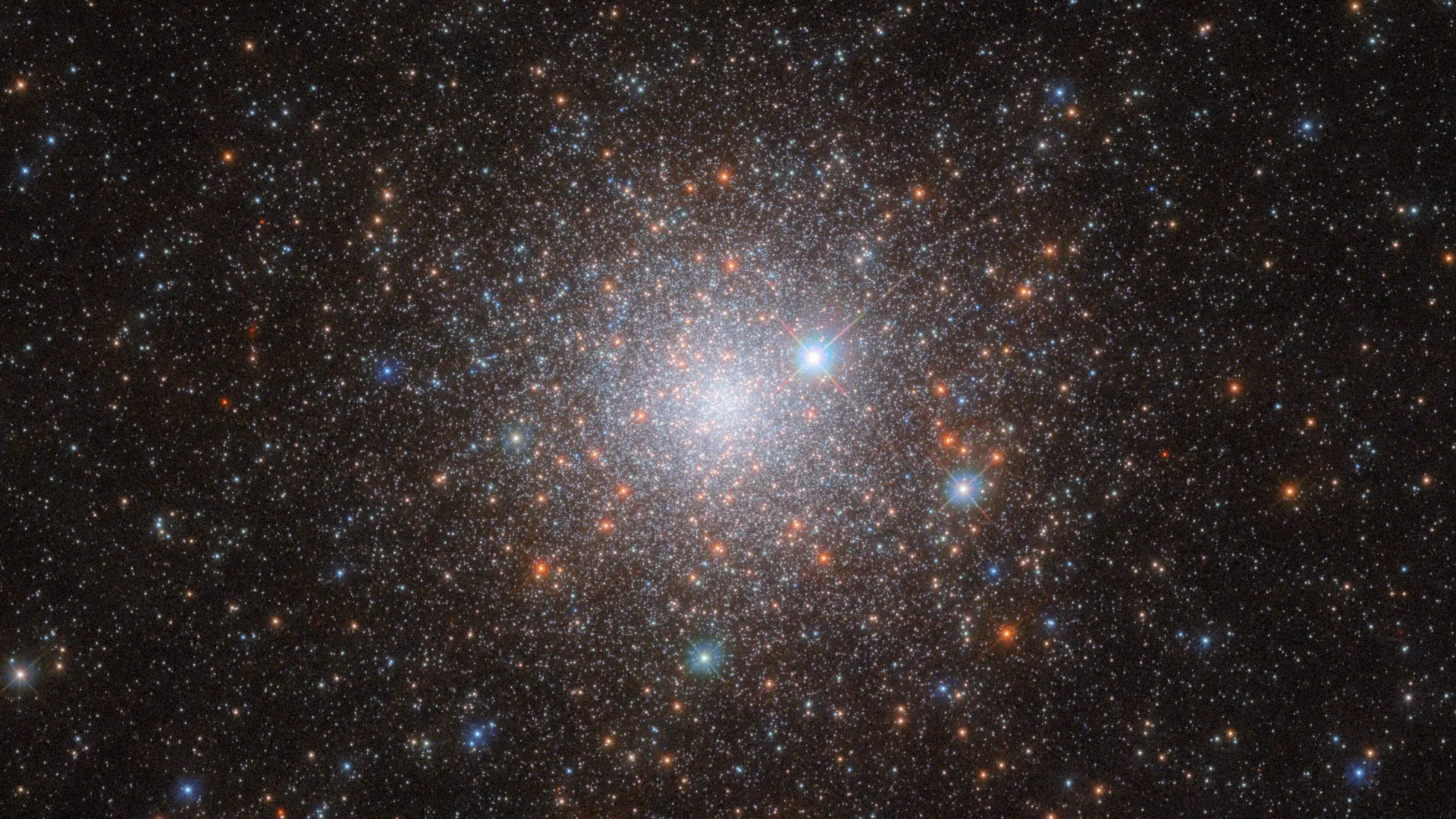Hubble Cracks Open a Glittering Cosmic Time Capsule, Revealing Multi-Generational Stars 160,000 Light-Years Away
- Date:
- July 14, 2025
- Source:
- ESA/Hubble
- Summary:
- Hubble’s crystal-clear look at NGC 1786—an ancient globular cluster tucked inside the Large Magellanic Cloud—pulls us 160,000 light-years from Earth and straight into a cosmic time machine. Packed with stars of several different ages, this glittering sphere helps astronomers test whether layered “generations” of suns are common across galaxies. By comparing NGC 1786 and other dwarf-galaxy clusters with those orbiting the Milky Way, researchers hope to retrace how both the LMC and our own galaxy pieced themselves together in the early universe.
- Share:

For this ESA/Hubble Picture of the Week, we gaze upon the field of stars that is NGC 1786. This object is a globular cluster in the Large Magellanic Cloud (LMC), a small satellite galaxy of the Milky Way Galaxy that is approximately 160,000 light-years away from Earth. NGC 1786 itself is in the constellation Dorado. It was discovered in the year 1835 by John Herschel.
The data for this image comes from an observing program comparing old globular clusters in nearby dwarf galaxies -- the LMC, the Small Magellanic Cloud and the Fornax dwarf spheroidal galaxy -- to the globular clusters in the Milky Way galaxy. Our galaxy contains over 150 of these old, spherical collections of tightly-bound stars, which have been studied in depth -- especially with Hubble Space Telescope images like this one, which show them in previously-unattainable detail. Being very stable and long-lived, they act as galactic time capsules, preserving stars from the earliest stages of a galaxy's formation.
Astronomers once thought that the stars in a globular cluster all formed together at about the same time, but study of the old globular clusters in our galaxy has uncovered multiple populations of stars with different ages. In order to use globular clusters as historical markers, we must understand how they form and where these stars of varying ages come from. This observing programme examined old globular clusters like NGC 1786 in these external galaxies to see if they, too, contain multiple populations of stars. This research can tell us more not only about how the LMC was originally formed, but the Milky Way Galaxy, too.
Story Source:
Materials provided by ESA/Hubble. Note: Content may be edited for style and length.
Cite This Page: